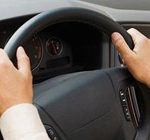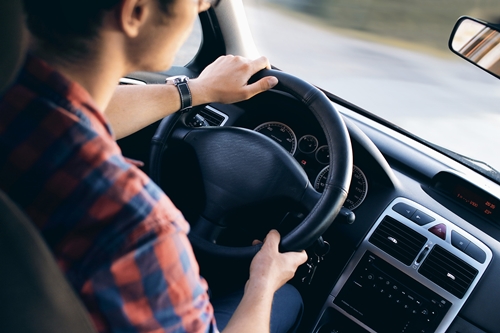Practicing your driving is probably the most important aspect of your driver’s education. I can tell you all about how everything works here on Driver’s Education Roadmap, your classroom instructor can give you all sorts of good information in the classroom, and your behind the wheel instructor can explain it all in detail, showing you what you need to know to get you driving, but we only have a limited time with you. To really learn to be a great driver, you need to practice and you need to practice often.
You only drive with your instructor for six hours. Sure, you are required to observe for six hours also, but your time with us is very limited, so you need to make the most of it. You need to be well rested and ready to learn when you come to every road lesson, If you are the type of person that gets really nervous when you do your road lessons then you need to practice more just so that you can relax and calm down a bit. No one learns their best when they are really nervous. Even if you have no experience driving and have never been behind the wheel, it would be helpful if you could get a bit of experience prior to driving with your instructor. Not that we mind if you don’t have any experience at all, it would just help to calm you down and make the most out of each and every one of your lessons. Maybe your parents could drive you to the school parking lot, or any big open parking lot, when it is empty just to give you some time behind the wheel. By the way, it is a good idea to track all of your driving practice. Download a driving log here: Driving Log
Big Empty Lot
Adjusting the Seat
If you do get the opportunity to go to a big empty lot, make the most of your time there. First things first, you should sit behind the wheel and adjust everything. The first thing to adjust is your seat. Get it in a comfortable position so that your feet can comfortably reach the pedals and your arms can comfortably reach the steering wheel. You don’t want to be too stretched out or to cramped. Some seats go up and down also, if your’s does, adjust it to the height that feels best to you. You don’t want to be straining to see over the hood and you don’t want your head hitting the roof of the car. Somewhere in between should be good. When you’ve got your seat just the way you like it, you need to adjust your mirrors.
Adjusting Mirrors
Before adjusting your mirrors, be sure to have the seat adjusted. Double check that the seat position is good. Then adjust your rear view mirror so that you can see out of the entire back window of your car. If you see a big part of your own head, you probably need to move it a bit further over to the passenger side of the car. With all of these mirrors, the object is to be able to see as much as possible about what is happening outside of your car. Once you have the rear view mirror adjusted, move on to the side view mirrors. The view in the side view mirrors should be split by the horizon, so if you were in a big open area with no buildings or anything behind you, the mirror would be half filled with ground and half filled with sky. The side view mirrors should also be adjusted wide as possible while still being able to see just a hint of the side of your car. Make sure that you have your head in a comfortable driving position when you are checking these mirrors. Once the mirrors are set, I think you are ready to drive.
Get Going
Now that everything is adjusted, make sure that you fasten your seat belt and ask your passenger to fasten their seat belt. Remember, any time you are in a car, you need to have that seat belt buckled. The most important safety device in your car are the seat belts. Be sure that they are fastened at all times. I assume that you are starting this drive out in the middle of the big parking lot. You should be ready to drive, so put the car in gear and let’s get going. At first everything will feel a bit weird, but trust me, with time it will all feel right. For now, ease your foot off of the brake and the car should start rolling. I am assuming that your car has an automatic transmission like most of them do. If not, that is a discussion for another day. Once the car starts rolling, press the brake a bit to stop it. Then maybe let off the brake and press the accelerator a bit to see what that feels like.
Circling and Turning
Take your time circling the big parking lot and swerving back and forth a bit to get the feel for how the car moves. Obviously, as you learned in the classroom , you must use your turn signals and check your blind spots before you turn left or right to make sure that no one is there for you to run into. This may seem like it is unnecessary here in the parking lot, but it is more about develop ing the correct habits right from the start than it is about knowing that no one is there. And besides, you will lose points on your driving test if you fail to use turn signals and check blind spots in the parking lot of the DMV. As you’re doing this, keep in mind that your hand positions need to be at 3 and 9 o’clock on the steering wheel. Keep in mind also that you need to be using hand over hand steering, no palming the wheel or doing the shuffle as so many new drivers are apt to do. As you become more comfortable with how the car moves, try circling the lot in the opposite direction or maybe try a figure 8. Once again, it all feels strange now, but it will become second nature soon. It is good to practice like this for a bit just to get the feel for it. Like I said, we don’t mind doing it with you, but we only have 6 hours, so it is nice if you already feel comfortable behind the wheel before you come for your first lesson. That way we can get right out onto the road and start with the real stuff.
ing the correct habits right from the start than it is about knowing that no one is there. And besides, you will lose points on your driving test if you fail to use turn signals and check blind spots in the parking lot of the DMV. As you’re doing this, keep in mind that your hand positions need to be at 3 and 9 o’clock on the steering wheel. Keep in mind also that you need to be using hand over hand steering, no palming the wheel or doing the shuffle as so many new drivers are apt to do. As you become more comfortable with how the car moves, try circling the lot in the opposite direction or maybe try a figure 8. Once again, it all feels strange now, but it will become second nature soon. It is good to practice like this for a bit just to get the feel for it. Like I said, we don’t mind doing it with you, but we only have 6 hours, so it is nice if you already feel comfortable behind the wheel before you come for your first lesson. That way we can get right out onto the road and start with the real stuff.
Observation
As part of your behind the wheel training, you will be observing another student driving. This may feel like down time, but it is important. Don’t just look around, play on your phone, daydream about your day or fall asleep, you need to be paying attention and thinking through what the other student is doing. If you are observing while someone is parallel parking, picture all of the steps in your head, envision yourself doing the maneuvers as the other student does them. All of this will help you when it is your turn to drive. If the other student is driving down the street, think about all of the little things that they should be doing as they drive. See if you can think through every different motion as they drive. Many students regard the observation hour as a waste of time, but I assure you that if you use the time wisely, it can be a very valuable learning tool.
Look for the next post entitled Practicing Your Driving #2.
